Button Robe Item Number: E20679-0 from the National Museum of Natural History
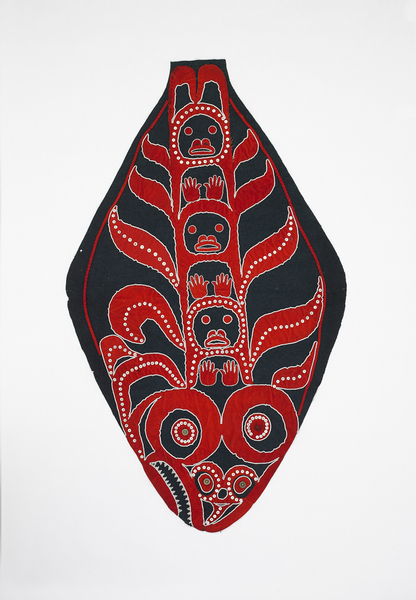
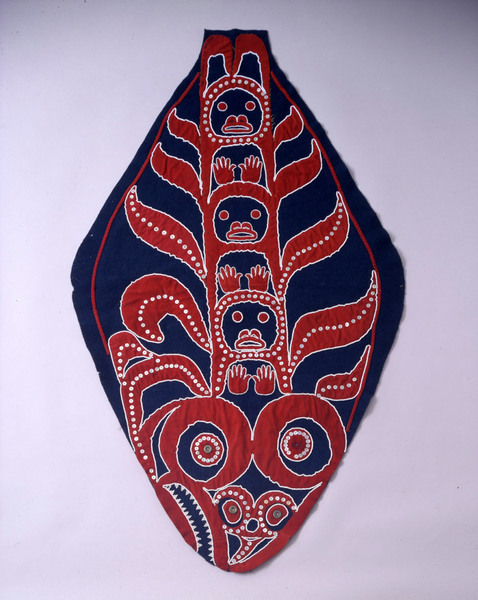
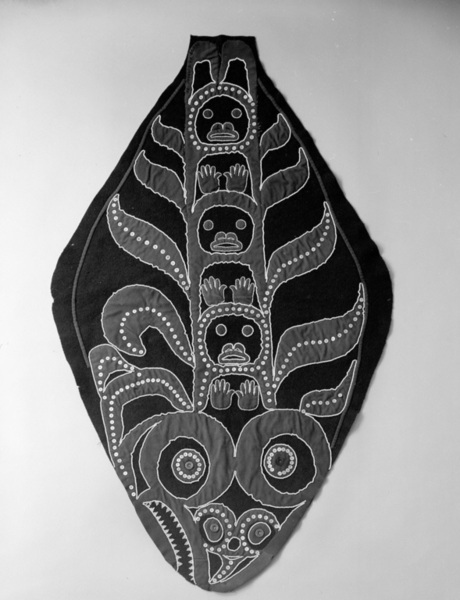
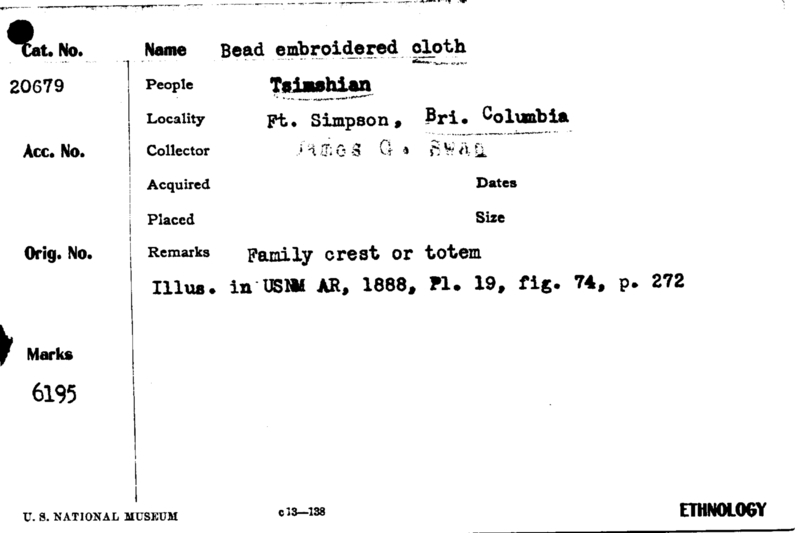
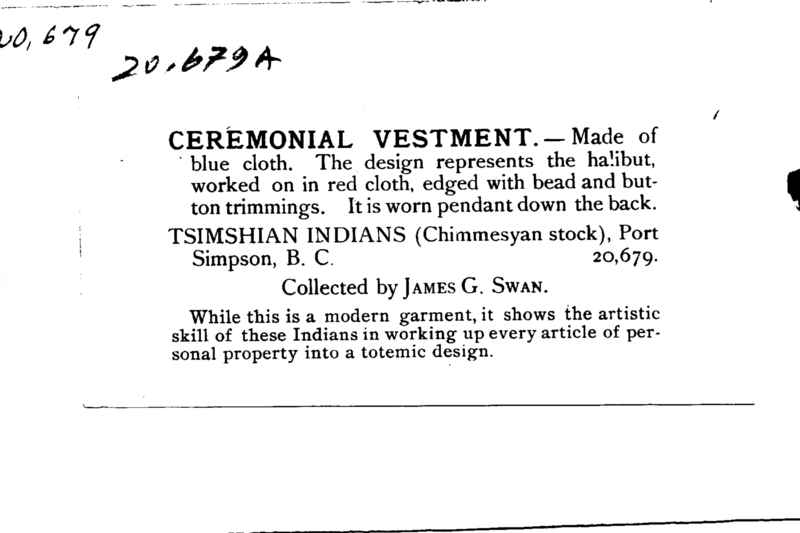
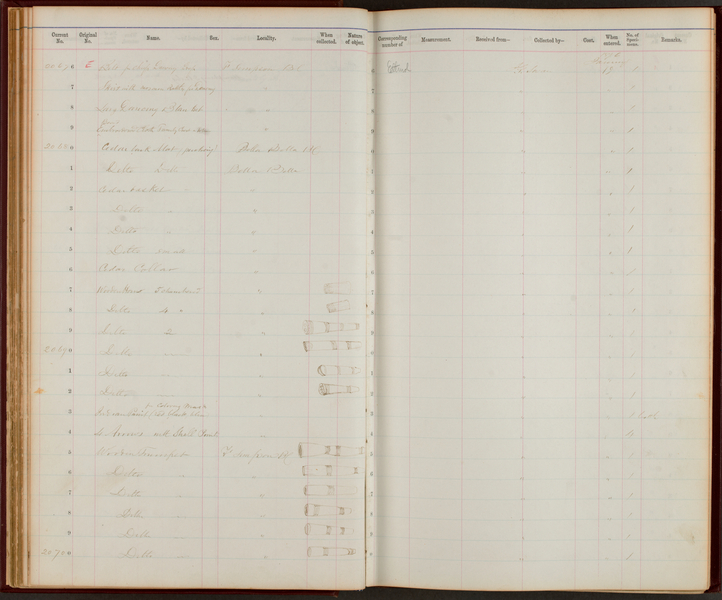
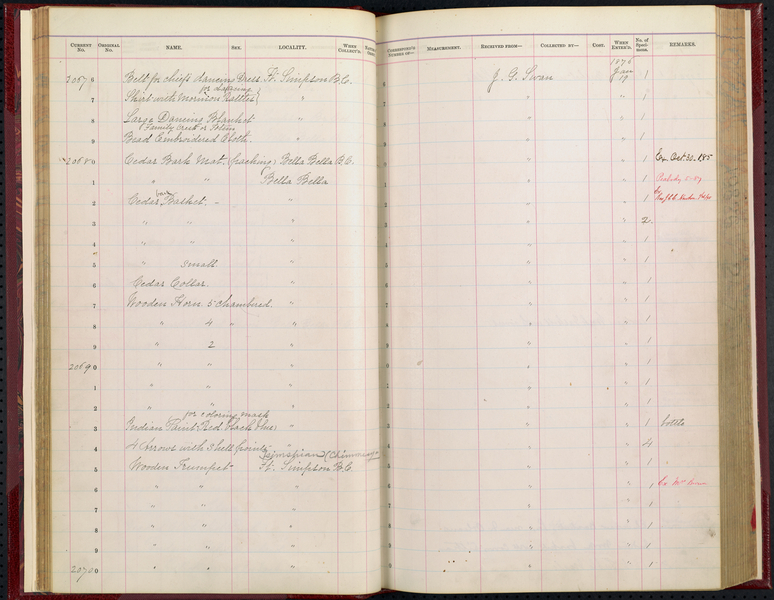
Notes
FROM CARD: "FAMILY CREST OR TOTEM ILLUS. IN USNM AR, 1888, PL. 19, FIG. 74, P. 272." FROM 19TH OR EARLY 20TH CENTURY EXHIBIT LABEL WITH CARD: "CEREMONIAL VESTMENT.---MADE OF BLUE CLOTH. THE DESIGN REPRESENTS THE HALIBUT, WORKED ON IN RED CLOTH, EDGED WITH BEAD AND BUTTON TRIMMINGS. IT IS WORN PENDANT DOWN THE BACK. TSIMSHIAN INDIANS (CHIMMESYAN STOCK), PORT SIMPSON, B. C. 20,679. COLLECTED BY JAMES G. SWAN. WHILE THIS IS A MODERN GARMENT, IT SHOWS THE ARTISTIC SKILL OF THESE INDIANS IN WORKING UP EVERY ARTICLE OF PERSONAL PROPERTY INTO A TOTEMIC DESIGN."This object is on loan to the Anchorage Museum at Rasmuson Center, from 2010 through 2027.Source of the information below: Smithsonian Arctic Studies Center Alaska Native Collections: Sharing Knowledge website, by Aron Crowell, entry on this artifact http://alaska.si.edu/record.asp?id=529, retrieved 4-24-2012: Button robe. In the traditional history "Explanation of the Beaver Hat," a group of Eagles flees the Copper River region after a war. During their voyage south, three young people are swallowed by a giant halibut. When the monster is killed and cut open, the bodies are found inside, as shown on this button robe design. One of the surviving men kills a beaver that has copper eyes, claws, ears, and teeth, which is why Beaver and Halibut both came to be crests of the Eagles and are often displayed on their regalia. This design is made of red trade cloth on blue wool, with white beads and shell buttons. "The Eagle clan came from Alaska down to British Columbia, and one of their canoes was upended by a monster halibut. This design shows the halibut and the people that it took." - David Boxley (Tsimshian), 2009
Item History
- Made in Fort Simpson, British Columbia, Canada
- Collected by James G. Swan in Fort Simpson, British Columbia, Canada
- Received during 1876
What
- Name
- Button Robe
- Identification Number
- E20679-0
- Type of Item
- robe
Who
- Culture
- Tsimshian
- Field Collector
- James G. Swan
Where
- Holding Institution
- National Museum of Natural History
- Made in
- Fort Simpson, British Columbia, Canada
- Collected in
- Fort Simpson, British Columbia, Canada
When
- Acquisition Date
- during 1876
Other
- Accession Number
- 004686